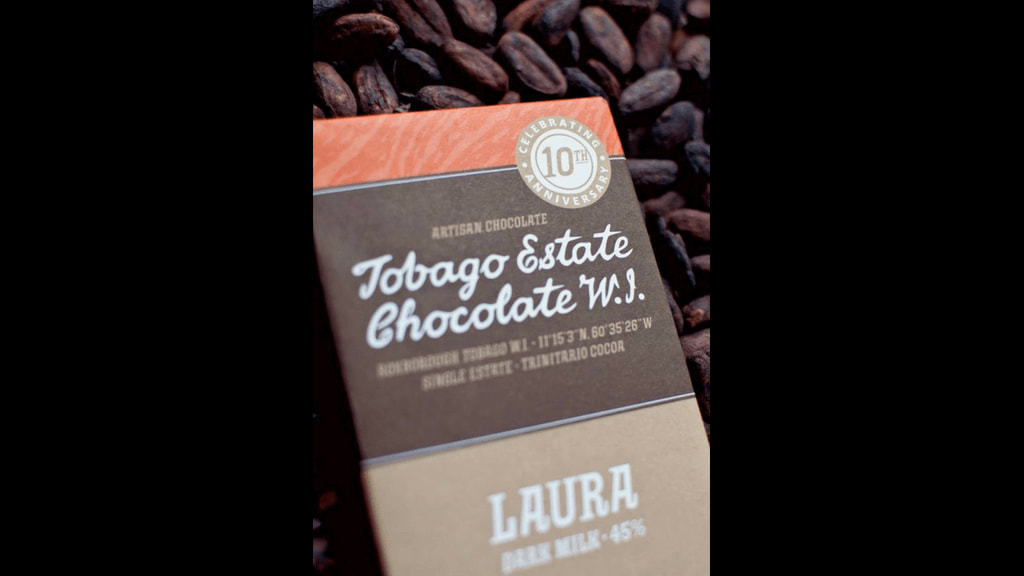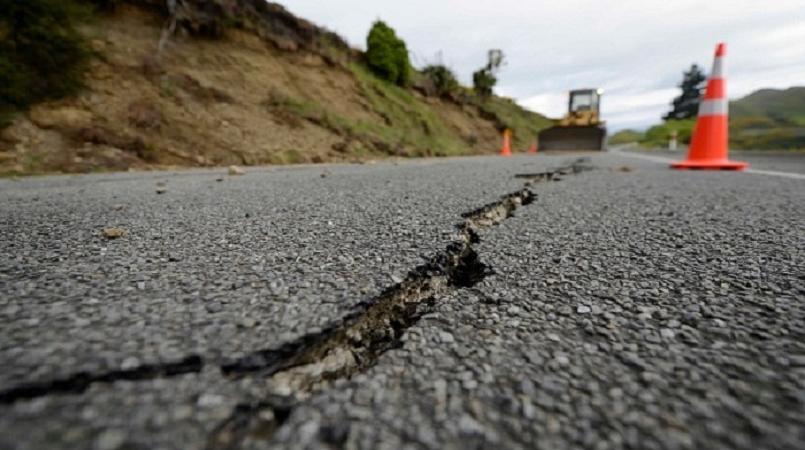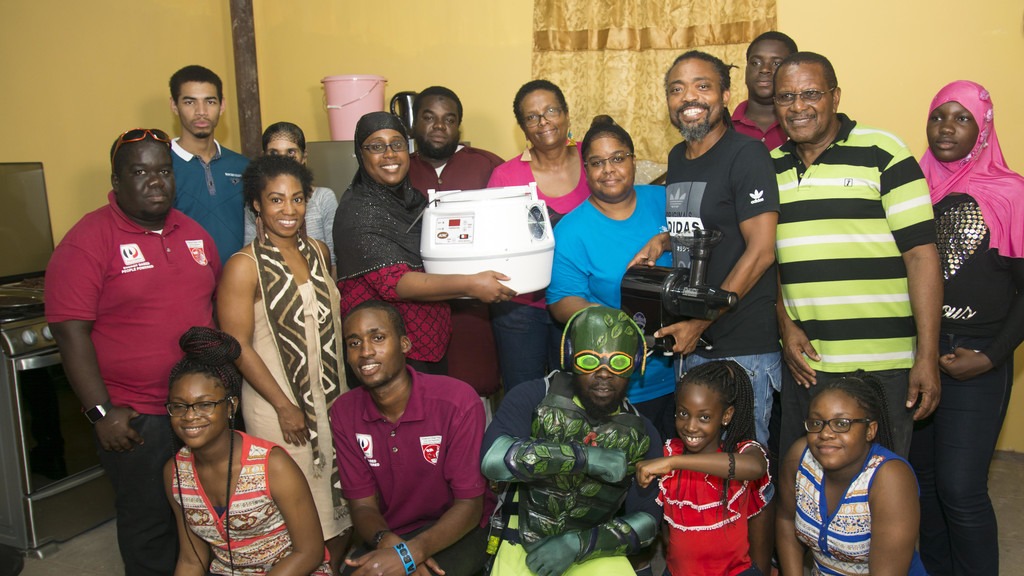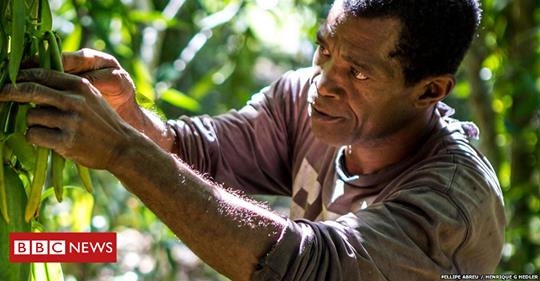|
Trini Cooking with Natasha Thousands of viewers have learned to cook Caribbean favourites, fusion recipes and international cuisine through Trini Cooking with Natasha. The Youtube Channel, led by Trinidadian Natasha Laggan, keeps attracting fans. And it all started with a simple video camera in her home kitchen in 2015.
“I was born in TT but after I got married in my late 20s, I moved to the US,” the culinary enthusiast noted. “I learnt to cook from my paternal grandmother and my mom while growing up as a child. I spent a lot of time in the kitchen with her before school and sometimes after,” she recalled. “I would get up at 3 am help my mom prepare for her food business then change into my school uniform and work with her until it was time to leave for school. I believe this really instilled work ethic and helped me to be humble today. I was never ashamed to do it and I want the younger generation reading this to know... don’t ever feel ashamed because it’s these core values that will shape you into a great human being.” Laggan's move to the US really solidified her long-held love for local cuisine. “I began making notes of the recipes I missed from back home and would start recreating them during the day while my husband was at work. In sharing the images, people would also ask me to share the recipe, but in today’s multimedia environment, that wasn’t enough. So, I eventually sent friends videos of me preparing and cooking the recipes. The natural result was that one day a friend of mine suggested that I post it to Youtube, so I did,” she told WMN. The rest wasn’t history for Laggan, at least not yet. “You could tell in my earlier videos, that I wasn’t too sure of myself on video. For the cooking yes, I was sure, but I wasn’t yet comfortable in front of the camera,” she recalled. Soon after that, her first child was born, a few weeks earlier than planned – throwing her schedule into disarray. Laggan spent her day, as much as possible, at the hospital with her son who remained under observation, and her nights cooking – which for her was therapeutic. “Motherhood added its own demands to my day, but I continued as best as I could with recording my recipes and posting them. In some of those videos after my son came home, you could hear him cry at which point I would cut the filming and cooking, tend to him and return. I started off with a camcorder I had at home but eventually with the help of a friend’s expertise in photography, I would spend a little more time looking at the staging of my finished dishes, the lighting, angles and more. My staging and recording area was created using many DIY projects which inspired me.” The aim for continuous improvement began to yield benefits soon enough – in the form of views, likes, follows and fans. She later revealed herself on camera for the very first time just a few weeks ago with the help of other social media celebrity food enthusiasts – Eat Ah Food and the Foodie Nation brands. “I have done over 1,000 videos in three years; over 700 recipe videos and the rest a combination of vlogs and reviews and in each recipe video, I try to make it as easy to follow as possible so that people can truly learn by following the channel. "Recently, I expanded into trying to capture the Taste of D Town – by visiting restaurants and showing support for the local Trinidadian restaurants and food-related businesses like the produce vendor and our street food vendors who cook traditionally. Featuring them on my channel also gives them that free exposure so that they can be discovered so they can thrive and share their delicious foods with us. In my travels to places like the Maldives and Bora Bora I have also come across so many other dishes that I aim to recreate so that if I can help others discover food like I have and the joy of cooking, then that would be enough for me.” While the beginning may not have been part of a larger plan for the at-home mother, she certainly has outlined bigger action items for the future. “I’m currently working on a cookbook for 2019 which is real labour of love, with some innovative approaches to pairing print with social media. In working with my designer, I noticed that some of my earlier photos of recipes don’t live up to the later ones in terms of aesthetic that I want, so I am currently recreating each of the 250 plus recipes so that they can be photographed to the standard that I want to see in the final print,” she pointed out. Not to be outdone by that commitment, the cookbook will also feature an herb reference sheet so that those not too familiar with West Indian herbs can know to get exactly what is needed and will also feature a fridge, freezer and pantry essentials space as well. She detailed, “For those who are really committed, my new website, islandkitchen.shop, will be the home to my cookbook and will also feature items like the traditional tools , the tawah , dabalah and spices like turmeric, geera etc that you can purchase and have shipped anywhere you need it along with many other kitchen utensils too.” What started as a simple exercise in sharing with genuine intention has been met in kind with hundreds of thousands of viewers both in the Caribbean and internationally. Of the journey, she said, “I really just want to pass on the knowledge and skills I learnt from generations before me which are traditional, and I hold close to my heart, as I no longer reside in Trinidad.” Follow her on Instagram @trinicooking19, Facebook Food page ‘Trini Cooking with Natasha Food and Recipe’s and on Twitter @trinicooking19. Source: Newsday, September 2018 Trinidad and Tobago’s chocolate is world class.
Tobago Estate’s Laura 45% bar has proven that, securing silver in the Plain/Milk Chocolate category in the 2018 European Bean-to-bar Competition which was judged in Amsterdam, Netherlands, May 10 – June 11. This is not Laura’s first win, having won gold in the same category in 2017. The dairy milk chocolate also picked up silver in the Academy of Chocolate 2017 awards and a Great Taste award in 2014. The winners of The International Chocolate Awards were announced on Thursday. The Bean-to-bar competition focuses on fine, craft and micro-batch chocolate makers who work directly from cocoa beans to produce plain/origin and flavoured chocolate bars from around Europe. Winners will go through to the World Final in Florence in October 2018. The European Bean-to-bar was the Award’s first competition focusing only on bars of all types made by bean-to-bar chocolate makers, for the first time including flavoured inclusion, infusion and filled bars made directly from cacao beans. This year’s competition saw an improved standard from European micro-batch producers, with both the dark and milk overall ‘Best-in-show’ prizes going to small craft chocolate makers, from Belgium and the UK. The competition is supported by the Hilton Amsterdam, and bean-to-bar chocolate shop Chocolate. Source: The Loop August 2018 The Word "Laventille" is actually French. Its derived from "La Ventaille", which means The Vent..Its named so because of the winds that passes through..Here's an exotic painting of the hills.
MUSICAL GENIUS: Elliot "Ellie" Mannette who died in West Virginia yesterday. PHOTO COURTESY PAN TRINBAGO'S FACEBOOK PAGE PAN PIONEER Elliot “Ellie” Mannette died yesterday at a West Virginia hospital, where he was being treated for kidney failure. He was 91.
A post by his family on Facebook yesterday said: “He was surrounded by people that loved him up until the very end. We would like to thank everyone for all the thoughts and prayers for Ellie. He was truly touched to see how much he is loved around the world. Ellie dedicated his entire life for the development of the steel pan. His biggest goal was to create and leave a legacy for his students to follow and continue his work. Thankfully, this legacy is in good hands and will be continued in his honour. Ellie’s tireless work over the past 75 years has touched the lives of so many people around the world. His family at Mannette Instruments will cherish his memory and continue his hard work.” Members of the pan fraternity also reacted to Mannette’s death. Michael Din Chong, manager of Shell Invaders, the band Mannette founded, said: “Our condolences go out to the Mannette family on behalf of the management of Invaders and the players. It is a great loss. “When we celebrated our 75th anniversary in 2015 he was unable to be with us, so we went to him in West Virginia in 2016 and made a presentation to him for his contribution to the formation of the band, and his subsequent innovations of the steelpan. No doubt he is the greatest contributor to our band. “We have just decided that we are going to dedicate our Republic Day J’Ouvert in honour of him.” Master pannist, steelpan tuner and Mannette’s personal friend Emanuel “Cobo Jack” Riley said from New York: “Ellie was the best steelband captain and steelpan maker in the world. He was responsible for all the advancement of the steelband. He was the man that invented everything. I was in Invaders panyard working with him when he discovered the octaves and the fifths. “He was also a man who, after practice in the panyard, will go home and listen to classical music. “He was a very decent guy. I really can’t describe the loss that I feel right now because the way I look up to him I just don’t know what to say.” Richard Forteau, secretary of Pan Trinbago, said:“We at Pan Trinbago send condolences to his family, Invaders and the entire pan fraternity. Indeed we have lost a great one. “He went to West Virginia and carved a name for himself. His contribution was a great one. He was one of the few surviving members of TASPO (Trinidad All-Steel Percussion Orchestra). Now we only have Sterling Betancourt and Tony Williams.” Ace pannist and arranger Ken “Professor” Philmore said: “Ellie Mannette was a true, true ambassador of TT. “I had the opportunity when he was in West Virginia to do a couple workshops with him and Andy Narrell. “I am very saddened to hear about his death. He was a great inventor. As a matter of fact the ‘thirds’ tenor pan that I play was invented by him. I believe the only two people that play that pan are Narrell and myself. “My prayers and thoughts go out to Invaders and by extension to the entire pan fraternity. We have truly lost a great pioneer. May he rest in peace.” Von Martin, CEO and founder of Caribbeana Communications Inc, Washington, DC, said: “I spoke with Ellie just two weeks ago to see what was his opinion of the book Voices of Pan Pioneers of Trinidad & Tobago. He was delighted as there was a whole chapter on his story in the book. He exclaimed, ‘You did a lot of work in it, man.’ I am satisfied that he was satisfied. “Recently I took the boys and girls of Pan Lara steelband to meet the icon in Morgantown, West Virginia. It was a treat to see Ellie engage with the youths. It was as though he was satisfied that pan is in the right hands. Mannette’s work at West Virginia State University, Mannette Instruments and the scores of steel pan projects were tremendous accomplishments. “I plan to do a three-hour tribute on my Saturday’s show of pan music in honour of this global icon.” Source: Newsday TT Trinidad and Tobago has been known to experience tremors and earthquakes due to its location along the southern border of the Caribbean Plate.
On August 21, 2018, a 6.9 earthquake caused massive panic, terror and confusion as citizens reported houses shaking, items falling off supermarket shelves and cracks forming in walls and along the ground. The earthquake measured an earth-shaking 6.9 and was felt in both Trinidad and Tobago, as far north as Grenada and as far south as Guyana. The epicentre of the 'quake, which was recorded in Venezuela, registered a magnitude of 7.3 on the Richter Scale. The US Geological Survey said this was the largest historic event within 250 kilometres of this location in the 20th and 21st centuries. Here’s a look at some of the worst earthquakes to hit T&T: 1. 1766 – San Jose The catastrophic earthquake of 1766 destroyed Trinidad's original capital of San Jose, now known as St Joseph, by a 7.9 earthquake, which may have been a factor in relocating the capital to Port-of-Spain. 2. 1888 Records show a 7.5 earthquake occurred within the Caribbean region, causing damage from Trinidad to St. Vincent. 3. 1954 - Trinidad Another strong earthquake was reported in 1954, with a magnitude of 6.5. A newspaper clipping titled ‘Earthquake in Trinidad’ in Australia’s Cairns Post was more concerned, however, that it spoiled the impending visit of Princess Margaret: “Trinidad, correspondent says that the earthquake yesterday seriously damaged the room in Government House which Princess Margaret is to use on her visit early next year.” The report added that “Heavy slabs of fallen masonry were piled high in the passage between the Princess' living room suite and the bathroom. The rooms were recently re-decorated in readiness for her arrival and will now have to be repaired.” “Glass lampshades were shattered and hardly a room in Government House does not show cracks, caused by the tremor, which was the worst in living memory,” the report said. 4. 1968 In 1968 a 7.0 earthquake was reported to have occurred near Trinidad, causing significant damage to neighbouring Venezuela with some damage to Port of Spain. 5. 1982, Tobago A 5.2 earthquake struck Tobago, which was the largest earthquake to occur up to that time. 6. 1996 – Trinidad, New Year’s Day A 5.2 was recorded as occurring just north of Trinidad on New Year’s Day. Luckily, there were no reported injuries. 7. 1997 – Tobago The 6.1 earthquake which occurred in 1997 caused major damage with an estimated US$25 million in damages occurring in Tobago, causing two persons to be injured and leaving 15 people homeless. 8. 2006 – Trinidad The country was rocked by a 5.8 earthquake in 2006, according to a Newsday report. No lives were lost, however some damage was reported and there were some injuries reported. 9. 2007 - Martinique, felt in T&T According to the Office of Disaster Preparedness and Management (ODPM) a massive 7.3 earthquake occurred near Martinique but it was felt throughout the Eastern Caribbean from Puerto Rico to Guyana, including T&T, with damage reported in Martinique, St. Lucia, St. Vincent and Barbados. 10. 2013 - Trinidad A massive 6.4 earthquake reportedly occurred just 74 kilometres north-west of Port-of-Spain on October 11, 2013, the strongest to occur since the ‘quake of 1997. Here are some helpful earthquake terms:
Here are 5 safety tips if an earthquake occurs:
Stay safe! Machel Montano or Machel Montano Foundation for Greatness presenting Siparia community chocolate making group with equipment to start their training. The Machel Montano Foundation for Greatness in collaboration with WHYFARM is training Siparia youth in the art of chocolate making.
A release from the Foundation said the initiative is being conducted in conjunction with WHYFARM, a nonprofit organisation established to counter the challenges relating to food security in communities around the world. Alpha Sennon, founder of WHYFARM, plans to grow the world‟s future feeders by turning agriculture into "agricoolture‟ with the help of his new superhero, Agriman. Over the course of three days, the Machel Montano Foundation for Greatness conducted training with the aim of providing tools and support for the production of a Siparia Community chocolate bar. Under the guidance of the Alliance of Rural Communities of Trinidad and Tobago (ARCTT) led by Gillian Goddard and Kelly Fitzjames, this group of young people from Siparia and environs learned to make chocolate with cocoa grown in their area. The participants were elated at being able to produce chocolates in just three days and enjoyed making different varieties of chocolate samples. Training was carried out by another successful community chocolate group, that now operates a successful business known as Brasso Seco Chocolate Company. The facilitators of the training sessions were Kelly, Yvonne and Mikel from Brasso Seco. Gillian will continue with additional training. The trainees comprise a group from WHYFARM, the Siparia Police Youth Club and the La Brea Straight Path Youths. Soca star Machel Montano attended the inaugural session and made a presentation on behalf of the foundation to the chocolate making trainees. He presented them with equipment and fittings to commence the activities. Montano expressed his excitement to work with the Sipraria community. Moving forward, members of the Siparia chocolate company will be equipped to successfully contribute to their community by creating employment, positive examples for others and making their own community chocolate and chocolate byproducts. The setting up and registration of Siparia Chocolate Company is now the group’s next move. A barefoot farmer is making his way through a forest.
Quiet drops of rain tumble steadily through the night, picked out in the light from his torch. The rusty machete he holds isn’t for cutting down vines or chopping away stubborn branches - it is a defence against thieves. Lots of other men - farmers like him - are out in the rain, patrolling the forest. For the past three months, they have left their homes every night and made the long journey into the plantations to protect their crop. But this is not an illegal coca plantation, or anything like it. In fact, these farmers are growing a crop whose name is a byword for something boring. The men need weapons to guard against robbers who roam the countryside looking for one thing - Madagascan vanilla. The robberies are often violent. There have been dozens of murders in Madagascar linked to vanilla. Several communities have tried and failed to get protection from armed police. Some have taken the law into their own hands. Villagers say in a nearby village, a machete-wielding crowd descended on five suspected gangsters - hacking and stabbing them to death. The killings have yet to be solved by the police. Locals say there is no will or capacity in the police forces to investigate the vanilla thefts - or the mob justice that sometimes follows. The chief of Leon’s village fears the same thing could happen there. A youngish-looking man, Chief Oreis is wearing shorts and sandals with a bright purple shirt when he stops by Leon’s house to say hello. His expression grows stern when he talks about the vanilla thefts. “We have to do our best to make sure thieves are not able to steal from us here,” he says. “Because if someone’s livelihood is taken away, they can do anything, even kill.” Thousands of miles away in London, Oddono’s ice cream shop is tucked between a pizza parlour and a cafe on a busy street in South Kensington. There’s a plethora of awards on one wall. The owners boast of the finest natural ingredients in their authentic Italian gelato: Valrhona chocolate from France, pistachios from Sicily, hazelnuts from Piedmont. But last year, one variety of ice cream was missing. “When I told customers that we didn’t have any vanilla ice cream, many of them were shocked,” says Christian Oddono, who manages the shop. “I had to explain that we didn’t want to give them bad quality products but also we were never going to use chemicals. Then, they understood.” The price for last year’s Madagascan vanilla crop was sky high, but Christian found the quality of what he was getting so low that he took vanilla ice cream off his menu. “The pods had too much moisture in them and some even had a mouldy smell - a sign that the curing process wasn’t done properly,” he says. “This year I found another, better supplier in Madagascar. The prices are still high, so we’ve had to raise our prices as well, but our customers haven’t complained. We see a general trend of more customers wanting to eat more authentic food and shying away from chemicals and lab-produced substitutes.” We are used to seeing vanilla all around us - in candles, cupcakes and creme brulees. But if you’re eating something vanilla-flavoured or smelling something vanilla-scented - it’s probably artificial. Scientists have been making synthetic vanillin - the compound that gives vanilla its aroma - since the 19th Century. It has been extracted from coal, tar, rice bran, wood pulp and even cow dung. Today, the vast majority of synthetic vanillin comes from petrochemicals. It can be 20 times cheaper than the real thing. The burgeoning interest in “artisanal” food made in a traditional way explains some of the demand for natural vanilla. But much of the rocketing price can be put down to food rules on both sides of the Atlantic. In Europe and the United States, ice cream labelled “vanilla” must contain natural vanillin extract from vanilla pods. If the flavour comes wholly or partly from artificial sources, the packaging must say “vanilla flavour” or “artificial vanilla”. Vanilla from vanilla pods will have a taste and potency unique to the area in which it is grown, much like wine. The vanilla from Madagascar has a distinct rummy taste and sweet aroma, which is why ice-cream makers choose it over vanilla from other countries. And there is more and more pressure on food companies to switch from artificial vanilla to vanilla beans. Big corporations such as Hershey and Nestle have started buying natural vanilla extract for their products in large quantities, which injects more demand into the limited supply chain and raises prices further. Over the past decade, vanilla prices have gone through dramatic booms and busts. Madagascar’s 80,000 growers produce more vanilla than any other country - so what happens on the island affects the global industry. In March 2017, cyclone Enawo struck the island and destroyed much of that year's crop. Two of the largest vanilla-producing regions were hit directly. Small growers have since struggled to match demand as it takes three to four years for a new plant to produce vanilla pods. Prices have rocketed. Five years ago, the price of 1kg (2lb 3oz) of vanilla was $20 (£15). In 2018, it briefly became more expensive than silver, reaching a peak of $600 a kilo, before a modest decline to $515 in June. The still-green beans start to ferment quickly, so buyers must be found fast. Small farmers typically sell green pods to middlemen who gather large amounts to sell on to local exporters. At this point, the pods do not have the characteristic vanilla smell or taste. The laborious journey - from pollination to curing and drying, and then preparing for export - takes about a year. The finished product is a brownish-black, heavily wrinkled vanilla bean that is soft, supple and leathery to the touch, with a strong aroma. The process can be used by speculators to preserve pods that have been harvested too early. They often store them to sell later at higher prices. But immature or improperly cured beans have a lower vanillin content and often a mouldy taste. Many farmers choose to pick their pods early themselves to avoid losing everything to thieves in the last months before the harvest. The government has tried to stop this by setting fixed harvest dates for each village. To hammer the message home, the authorities recently burned 500kg of prematurely picked pods in public. But there are smaller middlemen who are under immense pressure to get their beans early - and at a lower price. They get cash advances from big exporters - but they must deliver. Waiting until harvest time, when demand exceeds supply, can be risky. Arman Ramarokootonirina has been working as a middleman buying up vanilla from farmers in Maroantsetra for more than seven years. There are many unscrupulous new entrants into the industry, he says. It is now flush with cash. “It is the greed of the big bosses that is causing the problem. People get big advances yet they haven’t even planted any vanilla. Then they have to steal it from other people’s gardens to fulfill the orders.” But for the growers who are able to protect their crops, the high vanilla prices mean one good harvest can be life-changing. A kilogram of cured beans is worth $400-$500 - a hefty sum in a country where the average annual per capita income is $1,500. The grandest building in Maroantsetra is the headquarters of one of these exporters. Painted pristine white with dark green trim, it’s a striking contrast to the wooden houses on either side. Up to four tonnes of vanilla are exported from here every year. Security cameras line the path to the large warehouse at the back of the complex. There are big padlocks on the gates and iron bars criss-cross the windows. Sylvan Chen runs the place. They pat down the staff at the end of each day to make sure no vanilla is being smuggled out in bags, shoes or underwear. It’s not vanilla season yet, so the women on the lower floor of the warehouse now are sifting cloves - another spice exported from Madagascar, nowhere near as lucrative as vanilla. The upper floor is where the vanilla will be stored while it’s being dried. The space is packed to the rafters with cheap foam mattresses. Sylvan sold 2,000 of them last year to farmers, who prefer them to sleeping on traditional woven mats. They’re often handing back the cash Sylvan has just given them for their vanilla. Times are good for the industry, now that the price of vanilla is so high, Sylvan acknowledges. But there is a fear that short-term gains will cause long-term damage to the quality and reputation of Madagascan vanilla. “Madagascar’s vanilla is too expensive and people could turn to other countries which are equipped with quality standards. The vanilla sector here may no longer have a future if the quality doesn’t improve”. Trees and forest that are cut down cannot grow back the same way again - it would take hundreds of years. When this sort of damage occurs, a fragile ecosystem is disrupted. Lemurs will no longer have food here. Plants, insects and animals that relied on a delicate balance start to disappear. People in Madagascar are worried about its vanilla losing its reputation - but in the national park a fragile ecosystem is being badly damaged to cater for global demand. It is short-sightedness. |
T&T news blogThe intent of this blog is to bring some news from home and other fun items. If you enjoy what you read, please leave us a comment.. Archives
July 2025
Categories
All
|










 RSS Feed
RSS Feed